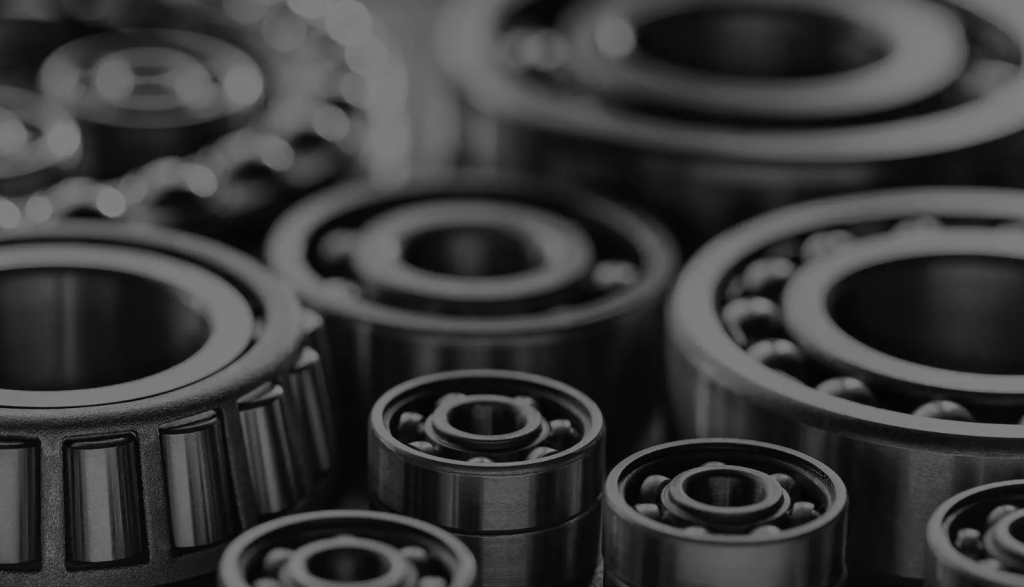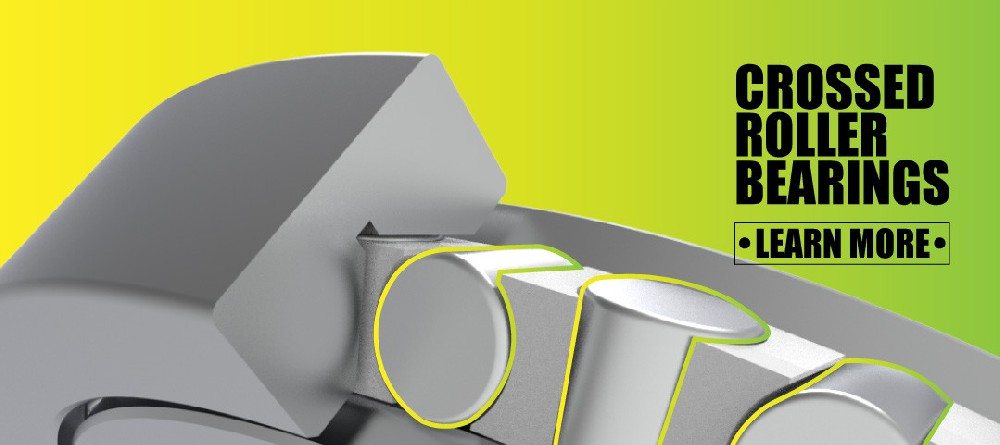Precision bearing play a vital role in modern machinery and equipment, ensuring smooth, accurate, and reliable motion across countless applications. From industrial manufacturing to aerospace and robotics, these components are designed to handle demanding conditions where precision and durability are non-negotiable. Unlike standard bearings, precision bearing are manufactured with very tight tolerances and superior materials to deliver consistent performance even under high speeds and heavy loads. However, achieving optimal performance from these bearings requires a clear understanding of various factors that influence their operation. These include the quality of materials, manufacturing accuracy, lubrication, load conditions, speed, installation, and environmental influences, among others. Overlooking any of these factors can lead to reduced efficiency, unexpected failures, or costly downtime. For engineers, maintenance professionals, and decision-makers, knowing what affects precision bearing performance is essential for making informed choices that enhance machine reliability and extend service life.
Precision Bearing Performance Key Factors You Need to Know

In this guide, we will explain the key factors affecting precision bearing performance and provide practical insights to help you optimize their use in your applications.
Precision bearing are essential components that ensure accurate, smooth, and reliable motion in machines. Their performance directly affects equipment efficiency, lifespan, and safety. Understanding what influences precision bearing performance helps in selecting, installing, and maintaining bearings effectively.
What Is a Precision Bearing?
A precision bearing is a type of rolling element bearing manufactured with very tight tolerances and high accuracy. These bearings have minimal internal clearance and smooth surfaces to enable precise and consistent rotation. They differ from standard bearings mainly by their: Visit here!
- Tight manufacturing tolerances that reduce play and vibration
- Higher dimensional accuracy for consistent rotation
- Superior surface finish to minimize friction and wear
Precision bearing are used in applications requiring exact positioning, low noise, and long service life. Examples include machine tools, aerospace systems, and medical devices.
Why Performance Factors Matter
The performance of a precision bearing affects not only the bearing itself but the entire machine’s operation. Key performance attributes include:
- Rotational accuracy: How precisely the bearing allows motion
- Smoothness: Low vibration and noise levels
- Durability: Resistance to wear and fatigue
- Load capacity: Ability to handle expected forces without damage
Poor bearing performance can lead to increased maintenance costs, machine downtime, and reduced product quality. Therefore, understanding what affects performance is crucial to avoid failures and optimize operation.
Key Factors Affecting Precision Bearing Performance
Precision bearing performance depends on multiple factors. Each plays a critical role in how well the bearing functions in its specific application:
- Material and quality of bearing components
- Manufacturing tolerances and accuracy
- Lubrication type and quality
- Load conditions and alignment
- Operating speed and heat management
- Installation methods and environment
- Bearing design suited for application
- Maintenance practices
- Quality of related machine components
Bearing Material and Quality
Material quality directly influences a bearing’s strength, durability, and friction characteristics.
- Most precision bearing are made from high-quality chrome steel (AISI 52100). This steel is hardened and heat-treated to resist wear and fatigue.
- For special applications, ceramic or hybrid bearings (ceramic balls with steel rings) are used. Ceramics reduce weight, friction, and thermal expansion but are more brittle.
- Material defects, impurities, or substandard hardness reduce performance and cause early failures.
- Surface treatment like chrome plating or nitriding improves corrosion resistance and wear life.
Ensuring the use of high-grade materials and strict quality checks during manufacturing prevents premature bearing failures.
Manufacturing Tolerances and Accuracy
Precision bearing are distinguished by their extremely tight manufacturing tolerances. These include:
- Dimensional accuracy: Precise inner and outer diameters, widths, and ring thicknesses
- Geometric accuracy: Roundness and cylindricity of rings and rolling elements
- Internal clearance: Controlled gap between rolling elements and raceways for proper fit and rotation
Tighter tolerances reduce vibration and increase rotational accuracy. Common tolerance classes include:
| Tolerance Class | Description | Application Examples |
|---|---|---|
| ABEC 1 (ISO 6) | Standard commercial bearing | General industrial machinery |
| ABEC 5 (ISO 5) | Precision grade | Machine tools, robotics |
| ABEC 7 (ISO 4) | High precision | Aerospace, medical devices |
| ABEC 9 (ISO 2) | Ultra precision | Optical equipment, high-speed spindles |
Higher tolerance classes cost more but offer better performance for demanding uses.
Lubrication Type and Quality
Lubrication is critical for reducing friction, preventing wear, and protecting bearings from corrosion.
- Grease lubrication is common for ease of application and sealing.
- Oil lubrication is preferred for high-speed or high-temperature environments as it dissipates heat better.
- Lubricants must have the correct viscosity to form an adequate film between rolling elements and raceways.
- Cleanliness is essential: contaminants like dirt or water in lubricant cause damage.
- Over-lubrication causes heat buildup; under-lubrication causes metal-to-metal contact.
Best practices include using manufacturer-recommended lubricants and adhering to scheduled re-lubrication or automated lubrication systems.
Load Conditions
Bearings must handle forces acting on them without deformation or failure. Load factors include:
- Radial load: Force perpendicular to the shaft
- Axial load: Force parallel to the shaft
- Combined load: Both radial and axial forces simultaneously
- Load magnitude: The size of the force relative to bearing rating
- Load distribution: Uniform vs. uneven loading
Excessive loads or shock loading cause increased stress and premature fatigue. Selecting a bearing with appropriate dynamic and static load ratings for the application ensures reliability.
Operating Speed
Speed affects friction, heat generation, and fatigue life of the bearing.
- Bearings have a maximum rated speed specified by the manufacturer.
- Operating above this speed causes excessive heat, lubricant breakdown, and premature failure.
- High speed combined with heavy loads increases bearing stress.
- Bearings designed for high-speed applications use special designs and lubricants to reduce friction.
- Heat generated at high speeds must be managed through cooling or specialized lubricants.
Proper speed management helps maintain bearing performance and extends life.
Installation and Alignment

Correct installation is vital to avoid damage and ensure even load distribution.
- Bearings must be installed using proper tools like presses, heaters, or pullers.
- Incorrect mounting causes bearing ring distortion or rolling element damage.
- Proper shaft and housing fits are essential — neither too tight nor too loose.
- Misalignment of shafts or bearing seats causes uneven load, vibration, and premature wear.
- Use alignment tools and follow manufacturer instructions carefully.
Poor installation practices are a leading cause of bearing failure.
Environmental Conditions
Operating environment affects bearing life and performance significantly.
- Temperature extremes affect material hardness and lubricant viscosity.
- Contaminants such as dust, dirt, moisture, and chemicals cause corrosion and abrasion inside bearings.
- Corrosion-resistant materials or coatings may be required in harsh environments.
- Sealed or shielded bearings prevent ingress of contaminants and lubricant leakage.
Choosing bearings and seals suited to the environment protects performance and longevity.
Bearing Design and Type
Selecting the appropriate bearing design depends on application needs.
- Angular contact bearings handle combined radial and axial loads and offer high stiffness and speed.
- Deep groove ball bearings are versatile, supporting radial loads and some axial loads.
- Ceramic hybrid bearings offer lower friction and higher speed but are costlier.
- Thrust bearings handle axial loads predominantly.
The right design ensures the bearing meets load, speed, and precision requirements.
Maintenance Practices
Regular maintenance maximizes bearing life and performance.
- Conduct routine inspections for vibration, noise, and temperature changes.
- Clean bearings and replace lubricant periodically.
- Monitor lubricant condition and replenish or replace it as needed.
- Follow recommended replacement intervals to prevent unexpected failure.
- Use condition monitoring tools such as vibration sensors to detect early signs of trouble.
Proactive maintenance reduces downtime and repair costs.
Quality of Supporting Components
The bearing is only as good as the surrounding components.
- Shaft and housing surfaces must be smooth and properly finished to avoid excessive wear.
- Seals must prevent contamination ingress and lubricant leakage.
- Component rigidity is important to prevent deformation and misalignment under load.
High-quality, well-maintained supporting components enable optimal bearing function.
Summary Table Key Factors Affecting Precision Bearing Performance
| Factor | Description | Impact on Performance | Key Takeaway |
|---|---|---|---|
| Material Quality | Steel type, hardness, surface treatment | Wear resistance, durability | Use high-grade steel and quality control |
| Manufacturing Tolerances | Dimensional accuracy, internal clearance | Vibration, rotational accuracy | Select proper tolerance class |
| Lubrication | Type, quality, cleanliness | Friction reduction, corrosion prevention | Follow lubrication best practices |
| Load Conditions | Load type, magnitude, distribution | Stress, fatigue resistance | Match bearing rating to load |
| Operating Speed | Max speed rating, heat management | Heat buildup, fatigue life | Adhere to speed limits, cool as needed |
| Installation and Alignment | Mounting method, fit, alignment | Load distribution, wear | Use correct tools and alignment checks |
| Environmental Conditions | Temperature, contaminants, corrosion | Corrosion, abrasion | Use seals and corrosion-resistant materials |
| Bearing Design | Bearing type and geometry | Load and speed suitability | Choose design matching application |
| Maintenance Practices | Inspections, cleaning, lubrication | Early failure detection, longevity | Implement regular maintenance |
| Supporting Components | Shaft finish, seals, rigidity | Load support, contamination control | Maintain surrounding components |
Frequently Asked Questions (FAQs)
Q1: What is the difference between a precision bearing and a standard bearing?
Precision bearings have tighter tolerances, higher accuracy, and better surface finishes than standard bearings. This results in smoother operation, less vibration, and longer life.
Q2: How does improper lubrication affect precision bearings?
Improper lubrication increases friction and wear, causing premature bearing failure and possible machine downtime.
Q3: Why is correct installation important for precision bearings?
Incorrect installation can deform bearing parts, cause misalignment, and lead to uneven load distribution and early failure.
Q4: Can I use the same precision bearing in different environmental conditions?
No, bearing materials, seals, and lubricants must be chosen based on operating temperature, humidity, and contamination levels.
Q5: How do I know when to replace a precision bearing?
Signs include increased noise, vibration, temperature, or visible damage during inspection. Following recommended replacement schedules also helps.

Conclusion
Precision bearing are critical components that significantly impact the efficiency and reliability of machines across various industries. Their performance depends on a combination of factors, including material quality, manufacturing precision, proper lubrication, correct load handling, operating speed, accurate installation, environmental conditions, bearing design, regular maintenance, and the quality of supporting components. Each of these factors plays a crucial role in ensuring smooth operation, minimizing wear, and preventing premature failure. Neglecting any aspect can lead to increased vibration, noise, reduced accuracy, and ultimately costly downtime. By understanding and managing these key elements, engineers and maintenance teams can enhance the lifespan and effectiveness of precision bearings, contributing to overall machine productivity and safety. Careful selection, correct installation, consistent lubrication, and proactive maintenance are essential steps in optimizing bearing performance. With this knowledge, you can make informed decisions to maximize the benefits of precision bearings in your equipment. Prioritizing these factors will help you achieve reliable, long-lasting operation and avoid unexpected disruptions.

